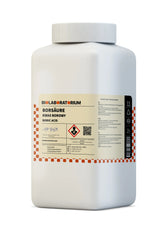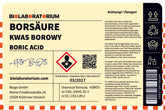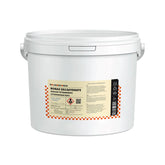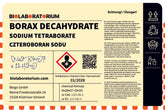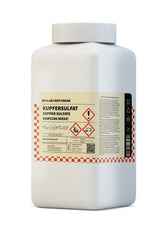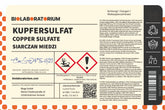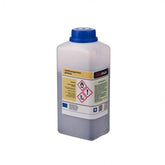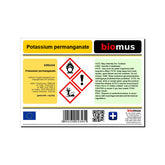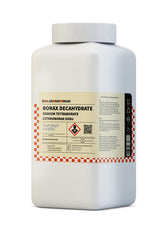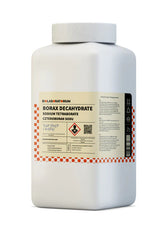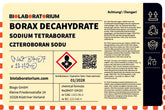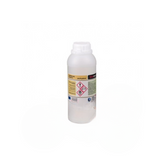Dimethylglyoxime – a classic reagent in heavy metal cation analysis
Dimethylglyoxime (DMG) is an organic reagent that plays an important role in analytical chemistry. It is frequently used for the detection and determination of heavy metal cations such as nickel, palladium, platinum, and cobalt. In this blog post, we want to take a closer look at the properties and applications of dimethylglyoxime.
Chemical structure and properties of dimethylglyoxime
Dimethylglyoxime is an organic compound with the molecular formula C₄H₈N₂O₂. It has two oxime groups (-C=N-OH) that are attached to two methyl groups. This structure gives dimethylglyoxime a characteristic chelating ability, which is crucial for its analytical use.
DMG is a white, crystalline solid that is only moderately soluble in water and most organic solvents. The melting point is 240 °C. Chemically, dimethylglyoxime is a weak acid with a pKa value of approximately 11.1. This property allows DMG to be used in pH-dependent reactions.
Analytical applications of dimethylglyoxime
The main application of dimethylglyoxime lies in the qualitative and quantitative analysis of heavy metal cations. In particular, nickel(II) ions form an intensely red, crystalline complex with DMG that is easily detectable. This complex has the molecular formula [Ni(DMG)₂] and exhibits a square-planar coordination geometry.
The detection of nickel(II) with dimethylglyoxime is typically carried out in alkaline solution. In this process, the nickel ion reacts with two molecules of DMG to form the red chelate complex. This reaction is very specific for nickel and can therefore be used for qualitative identification.
In addition to nickel, other heavy metal cations such as palladium(II), platinum(II), cobalt(II), and iron(II) can also form complexes with dimethylglyoxime. However, these complexes exhibit different colors, allowing for the differentiation of the metals. By applying photometric methods, the concentration of the metal ions can be quantitatively determined.
Nickel detection with dimethylglyoxime
The detection of nickel(II) ions with dimethylglyoxime is a classic experiment in inorganic analytics. The procedure is as follows:
- Addition of a nickel(II)-containing solution to an alkaline DMG solution
- Formation of a red, crystalline [Ni(DMG)₂] complex
- Precipitation of the complex, which can be easily filtered
- Identification of nickel based on the characteristic red color
The sensitivity of the detection is in the range of 0.1 mg nickel per liter of solution. By varying pH and concentration ratios, the selectivity and detection limit can be further optimized.
Quantitative Determination of Heavy Metals
In addition to qualitative detection, dimethylglyoxime can also be used for the quantitative analysis of heavy metal cations. For this purpose, the formed metal complexes are measured photometrically. By comparison with calibration curves, the concentration of the metal ions can be precisely determined.
Typical application areas include the analysis of nickel, palladium, platinum, and cobalt in industrial products, environmental samples, or biological matrices. DMG offers a cost-effective and reliable alternative to more complex instrumental methods such as atomic absorption spectroscopy.
Further Applications of Dimethylglyoxime
In addition to analytical use, dimethylglyoxime is also applied in other areas:
Complexing Agent in Metal Extraction
DMG can be used for the selective extraction and separation of metal ions from solutions. This process is utilized in hydrometallurgical ore processing.
Medical Applications
In medicine, dimethylglyoxime was previously used as an antidote for nickel poisoning. Today, it plays a role in the determination of nickel allergies.
Research and Development
In basic research, DMG serves as a model compound for studying metal complexes and chelate formation. It is also used in the development of new analytical methods.
Conclusion
Dimethylglyoxime is a versatile organic reagent with a long tradition in analytical chemistry. Its main area of application lies in the qualitative and quantitative determination of heavy metal cations such as nickel, palladium, and cobalt. The formation of colored chelate complexes enables a simple but reliable detection of these metals.
In addition to analytical applications, DMG is also used in other areas such as metal extraction and medicine. Overall, dimethylglyoxime is an important tool in modern chemistry and materials science.

